From Jewish bootleggers to Leonard Bernstein, the city's Jewish past comes alive in artifacts from the Municipal Archives. Diane Cole - Special To The Jewish Week 09/24/13
Call it a magical mystery tour of the collective attic of Manhattan's Jewish past.

Last Tuesday night, the jazzy yet plaintive strains of a lone klezmer clarinetist greeted visitors to the opening of an exhibition of archival documents, photographs and artifacts (another word for tchotchkes), "Celebrating 359 Years: Historical Moments in the NYC Jewish Experience: An Exhibit from the Collections of the NYC Municipal Archives". The setting was the opulently decorated, colonnaded three-story lobby of the Beaux-Arts-style Surrogate's Courthouse on Chambers Street in Lower Manhattan, built in 1907, an era when the less than opulent Lower East Side tenements teemed with Eastern European Jewish immigrants yearning to transform themselves from greenhorns into real New Yorkers.
But the exhibition itself, sponsored by the Manhattan Jewish Historical Initiative (MJHI) and the New York City Department of Records goes much farther back into the past, starting with the yellow-brown faded handwritten records chronicling the arrival of a small group of Jews in the Dutch colony of New Amsterdam in 1654. Additional similarly-faded documents from the same era reveal they had fled Recife, Brazil, after the Portuguese had taken over and banned Jews from living there, and that Gov. Peter Stuyvesant didn't want them in his territory, either.
So thank goodness that the West Indian Company overruled Stuyvesant, and thus began the community that that has grown into what MJHI organizer Howard Teich describes as "the greatest Jewish civilization outside of Israel".
Roam around the three rooms of the NYC Department of Records Visitor Center at the Surrogate's Court Building, where the exhibition is on display through Oct. 10, and you'll find approximately another 200 items highlighting and reflecting, different social, cultural and religious aspects of that story; they range from a document granting Asser Levy permission to be the first kosher butcher in 1662, to a 1942 copy of Kosher Butcher News, with a cartoon of an adorable cow on the cover; from a 1728 petition requesting the expansion of the Jewish burial ground to a rather lengthy 1918 listing of all Jewish cemeteries in New York; from a document regarding the captain of the boat that brought the Jews to New Amsterdam in 1654 to correspondence about helping survivors from the 1912 sinking of the Titanic and memorializing those who perished, including members of some of New York's most famous Jewish families.
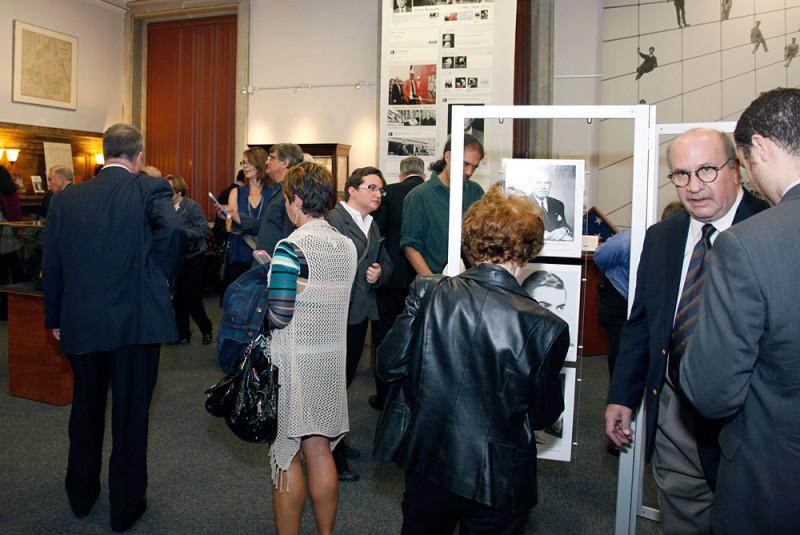
Add to these film clip interviews with Jerry Siegel, one of the inventors of Superman, and music by that super-conductor and musician, Leonard Bernstein. Get a load of the mug shots of Jewish mobsters from the early 1900s — and the police department photo of a yarmulke-laden bootlegger caught in front of his still during 1920s prohibition. And take your pick of any number of other glimpses of New York's Jewish past.
Refrains of "Who knew?!" filled the rooms as viewers came across unexpected details, reminders of personal history or just plain eerie coincidence. Writer and New York history buff Ira Wolfman was taken aback to discover that an irate letter to Mayor Fiorello LaGuardia from1936, attacking the mayor for attacking Adolf Hitler, was written by a man whose return address revealed he had lived in the very same building where Wolfman now resides. "Digging down below and finding these obscure bits, that's really interesting, he said of the exhibit. He was particularly intrigued by materials focusing on anti-Semitism in the 1930s and 1940s.
Photographer Chrystie Sherman smiled broadly as she stood before a pair of exquisite black-and-white photographs from the 1930's, one of a young yeshiva boy poring over a page of Talmud, the other of an old scholar with a white beard also studying Talmud. She had studied with that same photographer, Arnold Eagle, when she first moved to New York.

Jono Mainelli, a pianist and actor currently working in "Mamma Mia!" on Broadway, was found poring over a cabinet overflowing with theater memorabilia. Of particular interest: the 1889 theater license application for the Harlem Opera House, owned by impresario Oscar Hammerstein (his son's the one who wrote the lyrics to "Oklahoma" and "Carousel", a document required by every theater of the era to attest to its proper moral character, Mainelli explained. There was also an invitation to the 1926 opening of Abraham Goldfaden's play "The Tenth Commandment" at the Yiddish Art Theater on Second Avenue, a building that's now the Cinema Village movie theater, Mainelli pointed out, adding that he had been there just a few days before.
Justin Ferate, an urban historian specializing in New York history, also noted a rare photo of the great Yiddish actor Maurice Schwartz's Yiddish theater, located in Stanford White's Madison Square Garden, a venue far larger than the emblematic stages of the Lower East Side.
CUNY anthropology professor Alisse Waterston was so enchanted by what she called the "treasures" of the exhibition that she plans to bring her students. "The vast majority of my students are not Jewish but they will be interested in this. Why? Because a large proportion of my students are immigrants, and these are migration stories", she explained.
The woman who organized the exhibition, Eileen M. Flannelly, deputy commissioner of the city's Department of Records, (which holds the copyright for the materials), is herself someone who could speak to the similarities between different immigrant communities. When her mother, as a teenage immigrant from Ireland, found herself alone in New York after her older sister returned to Ireland, a Jewish family brought her up as one of their own. And although both her parents were Irish-Catholic, Eileen Flannelly recounted, they brought up their family in a predominantly Jewish neighborhood in Queens.
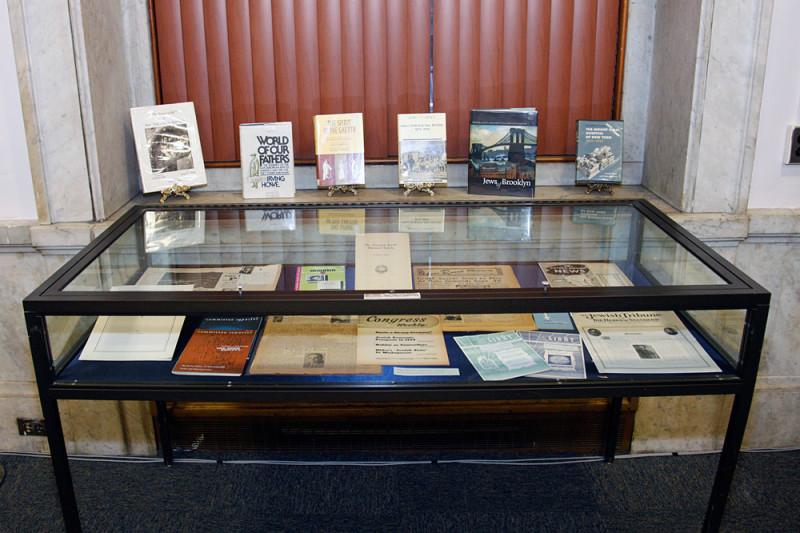
"I had without out question the best of both worlds because I got to experience the Jewish celebrations and traditions and the Catholic celebrations and traditions" Flannelly said, even though , still haven't gotten over, never having a bat mitzvah.
Since this exhibition takes place in the vicinity of City Hall, of course the political aspect is here, too, with a large banner celebrating Mayor Ed Koch dominating a large part of one wall. Which leads to the question: how did the opening night crowd think the exhibition was doing?
Mostly positive. But there was also a downside: more complete and informative labels would have been helpful in providing context. The choice of objects could be quirky, a plus to some, but for others it gave the exhibition a muddled, thrown together air. And there were grumblings about what wasn't there: Why include so much about some areas when other aspects cried out to be included instead?
The answer must come by way of paraphrasing the lament of the Brooklyn Dodgers: Wait 'til the next exhibition. Or for the online site devoted to MIJH that Teich plans to initiate next spring, modeled on the comprehensive site he helped organize for the Brooklyn Jewish Heritage Initiative, at brooklynjewish.org.
As for the limitations of what's on view now, "Space is always the problem" Eileen Flannelly lamented. "But this is to give people a taste of what's here". And there are lots of flavors to choose from.

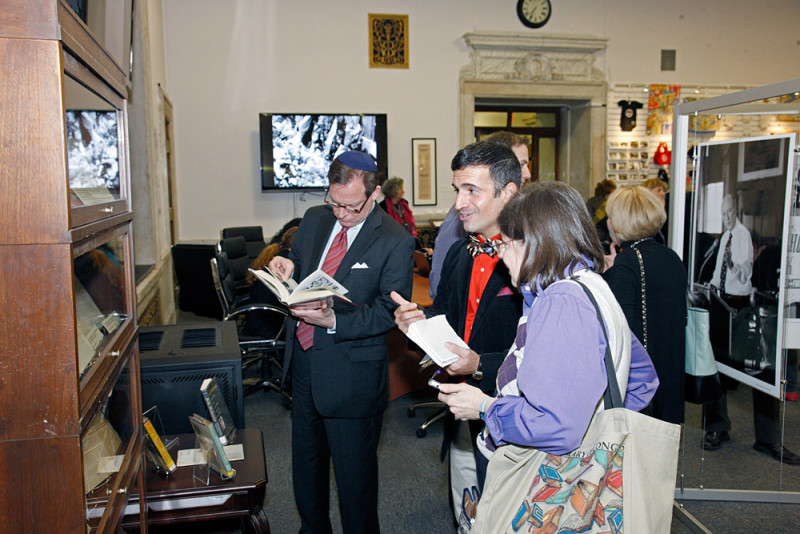



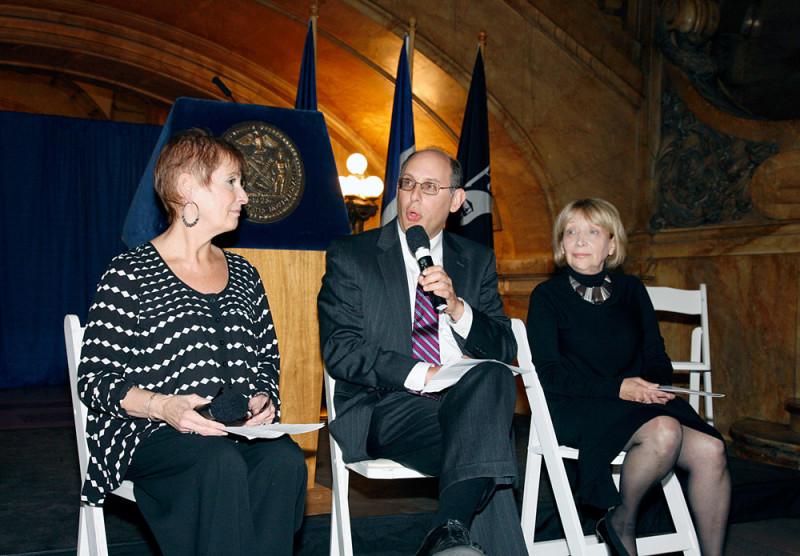
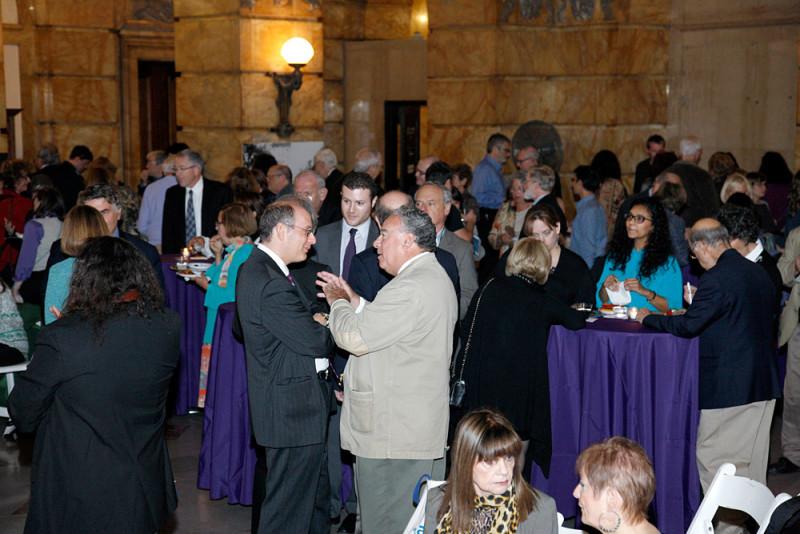
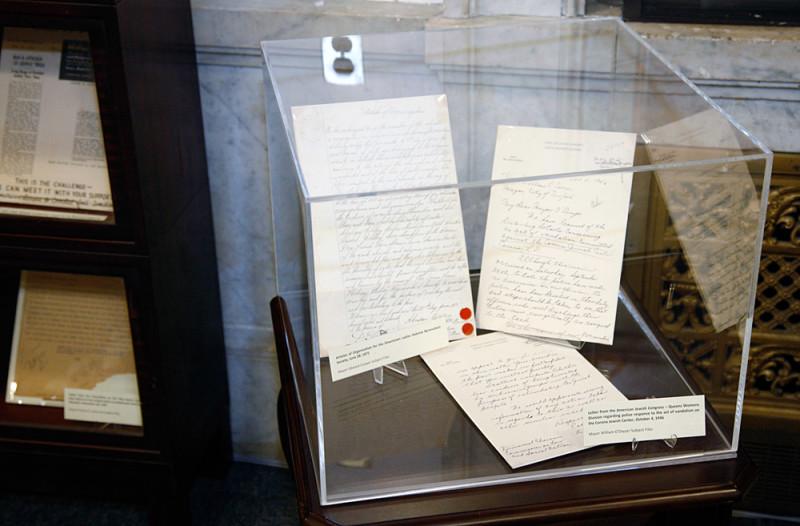
"Celebrating 359 Years: Historical Moments in the NYC Jewish Experience: An Exhibit from the Collections of the NYC Municipal Archives. Through Oct. 10 at Surrogate's Court Building, 31 Chambers St. (near Centre St.), Manhattan. Free and open to the public, Monday-Thursday 9 a.m.- 4:30 p.m., Friday 9 a.m.-1 p.m.

